We got up early on February 22nd hoping to see the planned launch by SpaceX of the PAZ satellite from Vandenberg Air Force Base. The last launch from Vandenberg was quite impressive with a huge display in the sky seen from all across Southern California.
The launch happened on time at 6:17 am PST, putting the satellite into a polar orbit. Two smaller SpaceX satellites went along as a secondary mission to test their planned satellite internet service. They also tried to land part of the payload fairing. That landing was not quite successful but the fairing half survived in good condition.
We watched the web cast of the launch and got our cameras ready. About two minutes after launch, we saw the rocket moving above the treeline. The trees were a bit of a problem as they fooled the autofocus on a few shots. This shot is at 6:19 am PST, T+2:05 into the mission. The rocket is already about 28 miles / 45 kilometers high and is going 2,600 MPH / 4,200 KPH. My speed and altitude numbers are approximate as I obtained them from matching my estimate of mission time (T+) to the webcast replay.
Just 12 seconds later, this shows how the rocket trail is expanding and is not lit up white by the Sun. T+2:17, 37 miles / 60 kilometers up and going 3,300 MPH / 5,400 KPH.
This picture was taken at just about main engine cut off or MECO. At this point the first stage shuts down, the second stage separates, and the second stage engine starts up. We are at 6:19 am PST, T+2:32, 48 miles / 77 kilometers up going 4,200 MPH / 6,700 KPH.
The second stage burning looks interesting and there appear to be two objects moving along. These pictures were taken at T+2:52 and T+2:57 respectively. This is approximately the time when the fairing was deployed, so that could be the other object in the picture. Altitude increasing quickly, 64 miles / 103 kilometers in the first picture, 72 miles / 115 kilometers in the second. Speed has gone down a bit to 4,000 MPH / 6,500 KPH.
At this point the clouds began to interfere more and the rocket was increasingly hard to see. This final image was taken at 6:21am, t+4:11 with the spacecraft at 132 miles / 213 kilometers in altitude moving 4,500 MPH / 7,300 KPH.

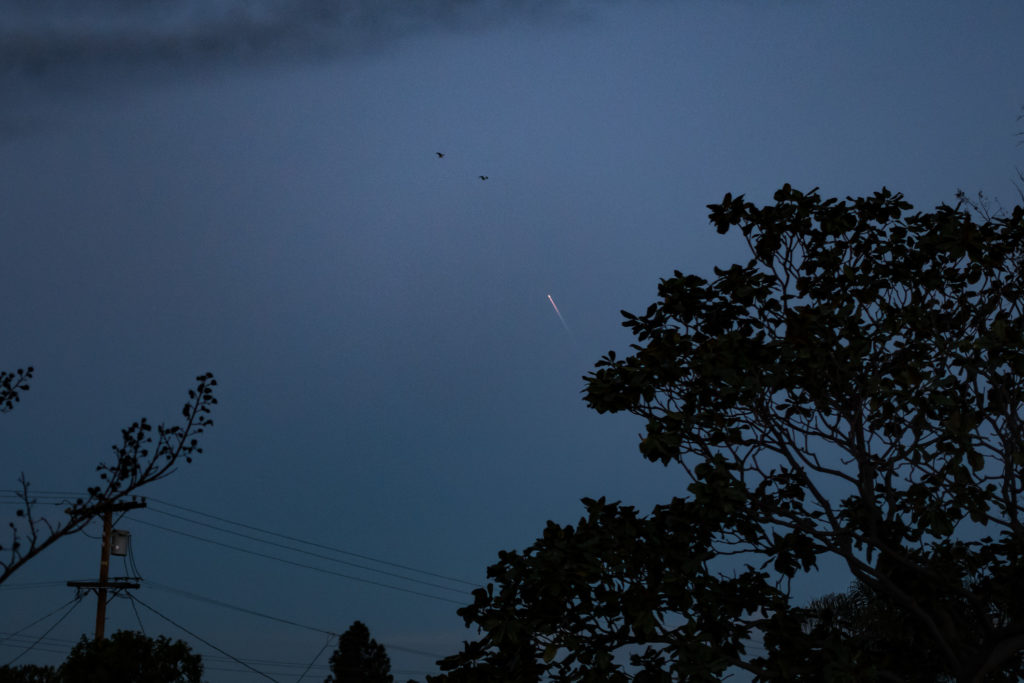
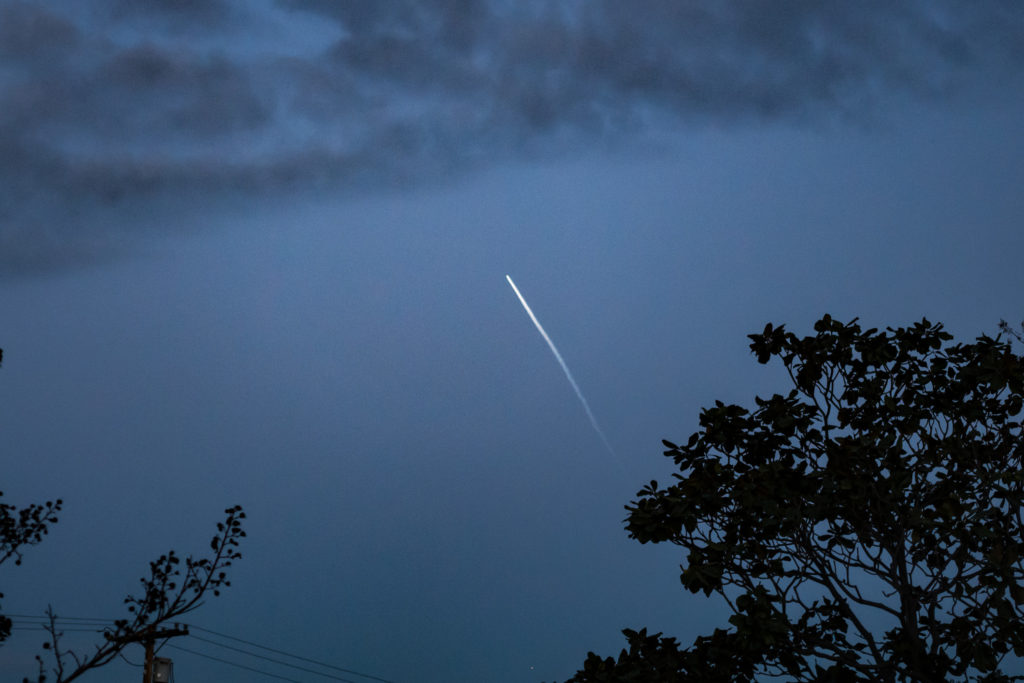
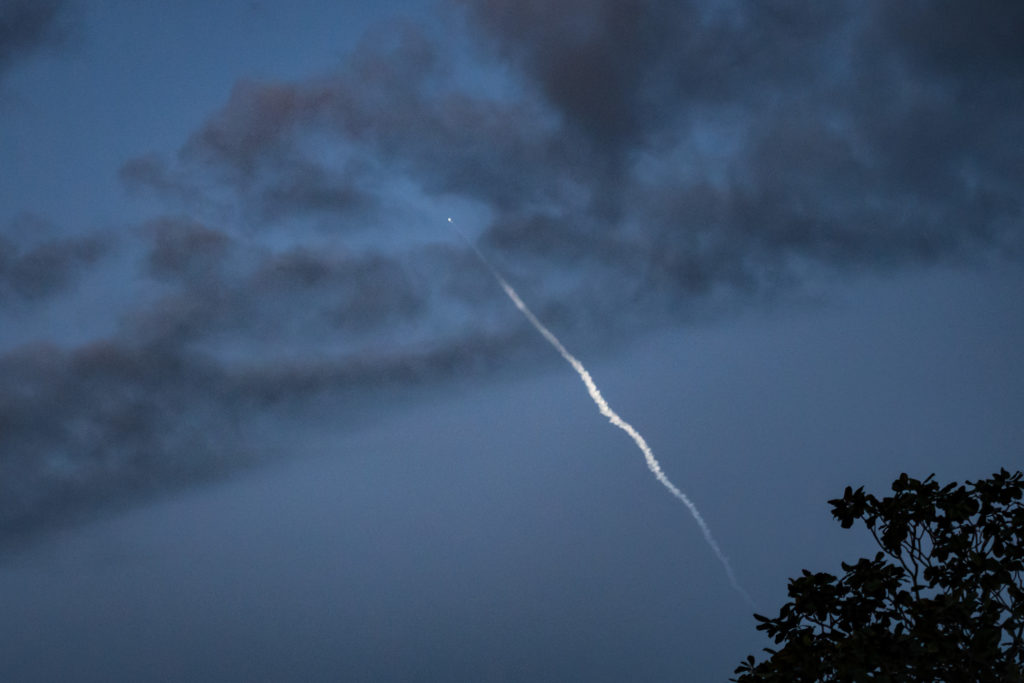
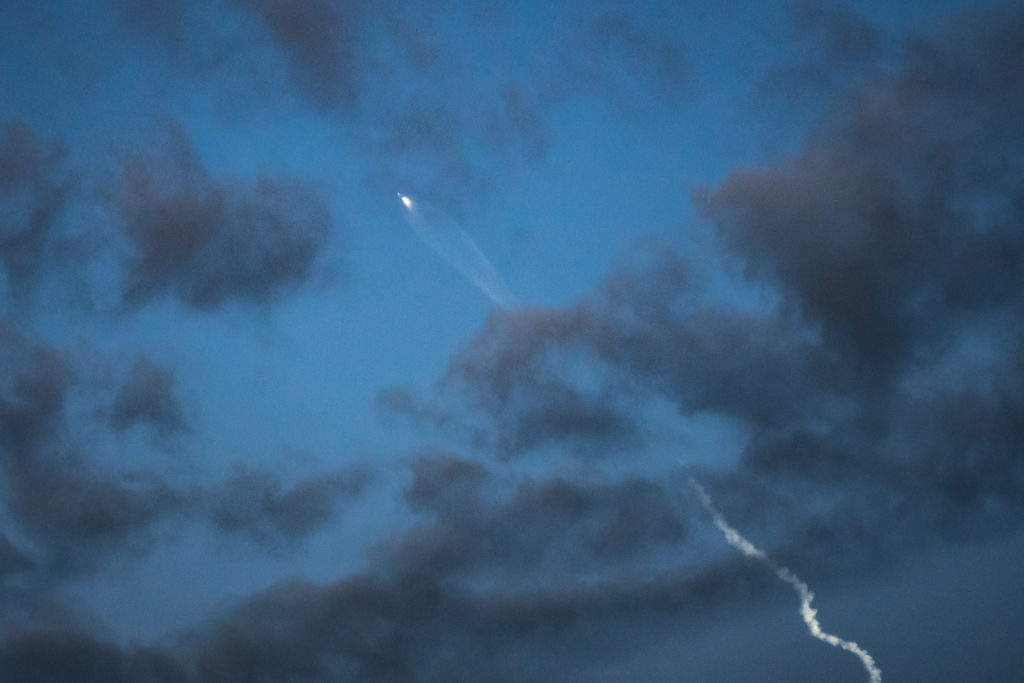
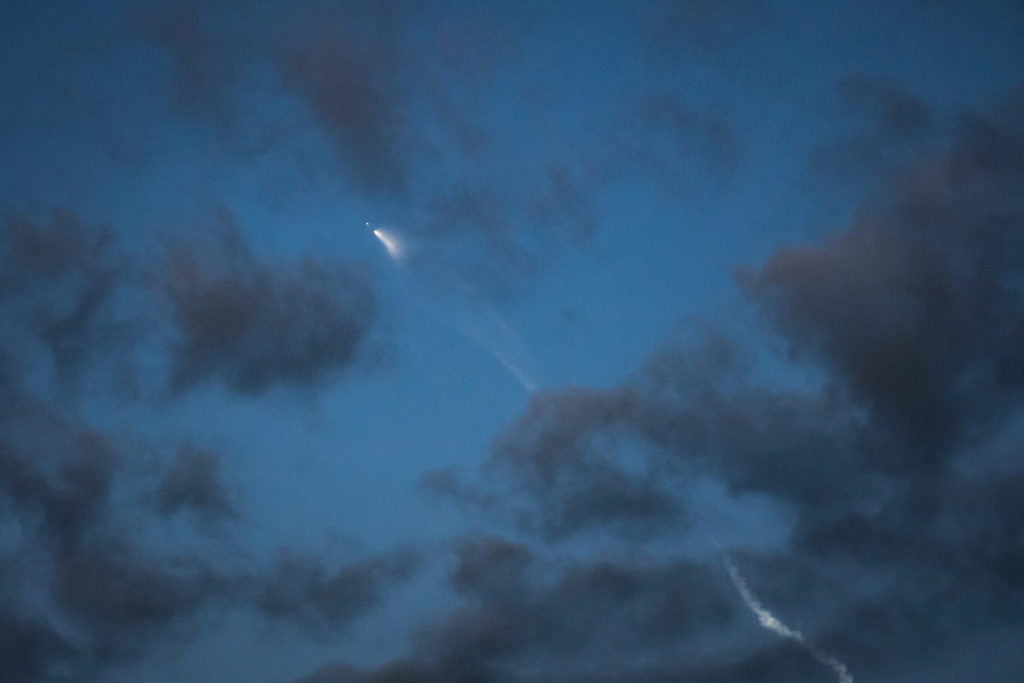
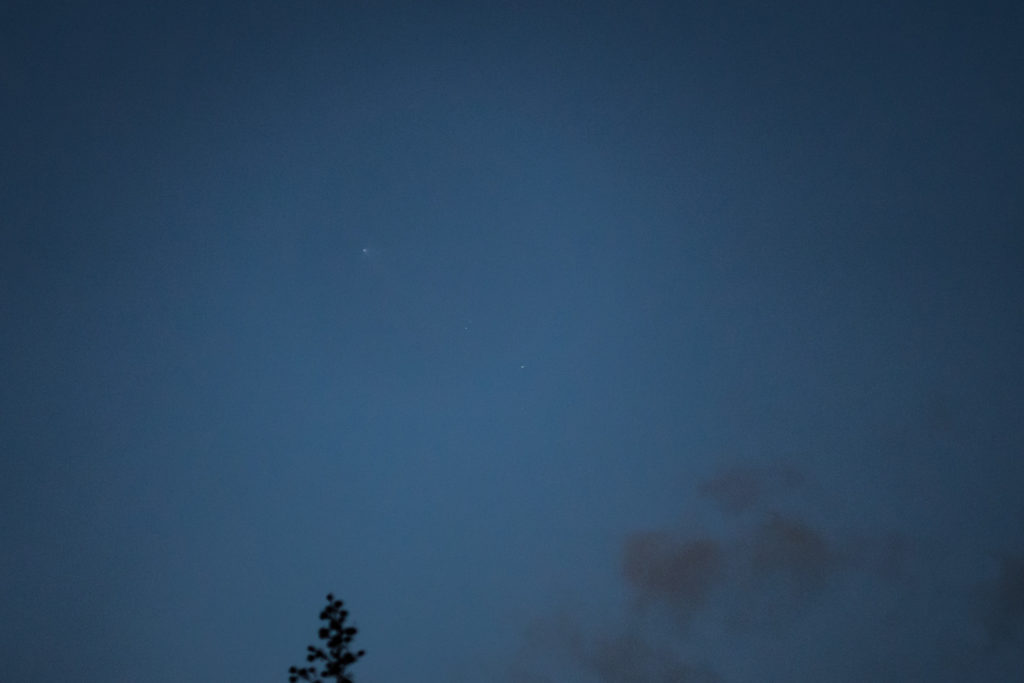
You must be logged in to post a comment.